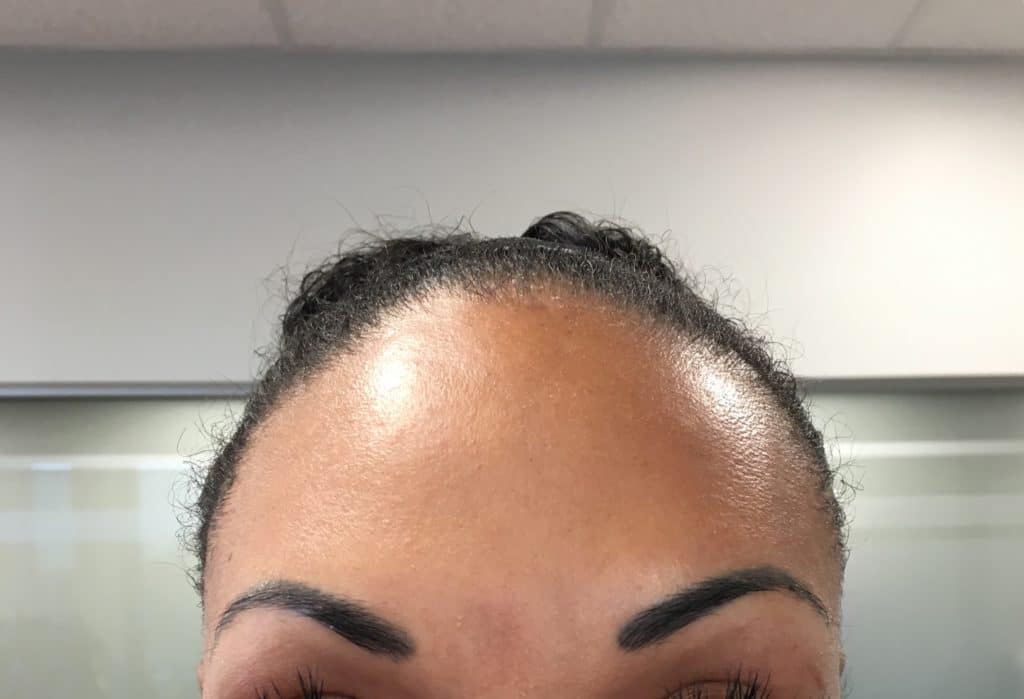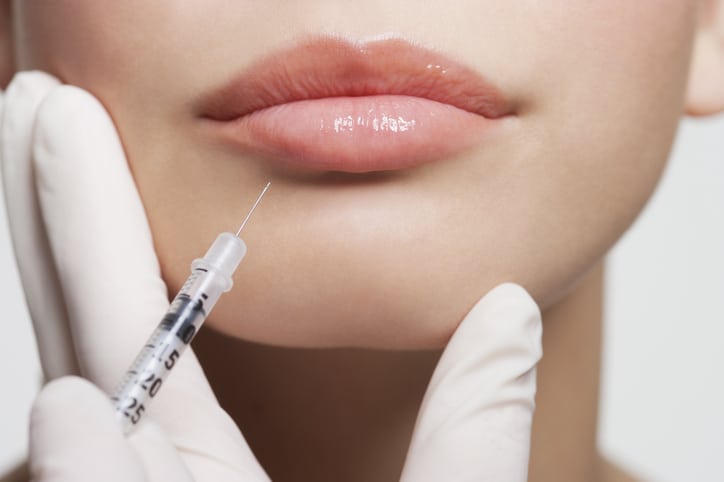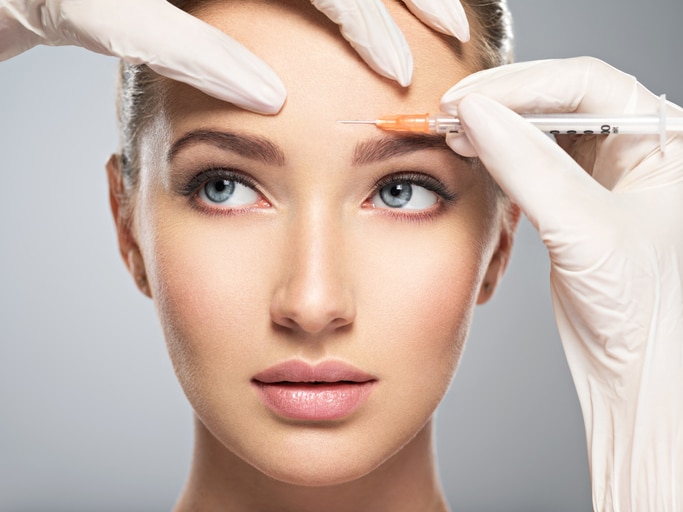BOTOX is one of the world’s most famous brand names. It has been around for decades treating conditions such as involuntary eyelid spasms, but in 2002 when the FDA approved BOTOX for the treatment of wrinkles on the upper third of the face, it became famous.
There’s a reason — it works. BOTOX relaxes the muscles that form wrinkles around the eyes, between the brows, and on the forehead. We offer BOTOX at Columbus Women’s Care. To learn more about BOTOX or to determine whether you are a candidate for treatment, please call 614.755.4200 and schedule a consultation with Dr. Cherie A. Richey today!
What is Botox?

BOTOX is made from the botulinum toxin type A, the same bacteria that cause botulism. But scientists studying the bacteria in the 1950s discovered an interesting phenomenon — when a very minute amount of the botulinum toxin was injected into a muscle it temporarily stopped the muscle from contracting. This proved useful when addressing certain conditions where muscles needed to be controlled, such as eyelid spasms. Those uses have expanded to treatment of migraines, excessive underarm sweating, even overactive bladders.
But when BOTOX was approved for aesthetic use, things got crazy. Every year since 2002, it has been the world’s most popular cosmetic procedure, surgical or non-surgical, worldwide.
How BOTOX Works

BOTOX is known clinically as a neuromodulator. When injected into a muscle, the botulinum toxin blocks the nerve messages sent from the muscle to the brain. This stops the muscle from contracting.
Certain types of wrinkles, known as “dynamic wrinkles,” form when we contract our facial muscles when making expressions such as smiling, squinting, showing surprise, and the like. Over time, as our skin loses some elasticity, these expressions create wrinkles such as crow’s feet. When injected into the muscle that creates a wrinkle, BOTOX stops the muscle from contracting, so the wrinkle no longer forms.
Is BOTOX Safe?
Because BOTOX is made from the botulinum toxin type A, the same bacteria that cause botulism, people wonder about its safety. They don’t need to. Back in the 1950s scientists discovered that when this neurotoxin was injected in miniscule amounts into a muscle it temporarily stopped the muscle from contracting, without any other side effects. Since that time, BOTOX has been used to treat various conditions involving muscle contractions, such as involuntary eyelid spasms and, more recently, migraine headaches. In fact, BOTOX has now received FDA approval for 11 therapeutic indications, such as chronic migraine, hyperhidrosis, overactive bladder, among others.
In 2002 the FDA approved BOTOX for use on facial wrinkles. Since then, BOTOX has been injected safely tens of millions of times around the globe.
Botox Before & After


Candidates For BOTOX Injections
Pretty much anyone over the age of 35 or 40 is a good candidate for BOTOX. The question is — what kind of wrinkles do you have? If your wrinkles show themselves at all times, similar to a wrinkled shirt, these are called “static” wrinkles. BOTOX does not affect these wrinkles. Static wrinkles are treated with dermal fillers such as Restylane. BOTOX works on dynamic wrinkles that develop when we make expressions. These wrinkles occur on the upper third of the face, the expressive area of the face.
Patient Testimonial
"I had the BEST experience here at this office. Everyone was very polite and Dr. Richie was so nice and she listened to me and my concerns and figured out a solution. I will be going back to this office from here on out. I wish I could give more than 5 stars."
How Many BOTOX Injections Will I Receive On My Visit?
Different muscles can require different amounts of BOTOX to fully relax them. For instance, men require more BOTOX than women because their muscles require larger amounts to relax them in the desired amount. The number of injections isn’t what matters; it’s the number of units that counts with BOTOX.
Here are some guidelines from Allergan, but each patient is different. At Columbus Women’s Care, we believe in starting with less, as we can always add more, but you can’t take it away. Allergan recommends these ballpark amounts:
- 12 units for crow’s feet for each eye
- 20 units for frown lines
- 20 units for forehead lines
Again, these are only rough guidelines. We work with every BOTOX patient completely individually.
How Often Can I Get BOTOX Injections?
There isn’t a limit on BOTOX injections. But there’s no need to repeat a BOTOX session before you begin to see your results diminishing. The rate at which the BOTOX breaks down the botulinum toxin and makes it inert varies. This depends on a person’s individual metabolism. Most patients can expect BOTOX to provide results for about four months, but some patients feel their results last six months. This is an individual thing.
At the point you begin to see your crow’s feet and other signs returning, that’s when it’s time to come see us at Columbus Women’s Care for another BOTOX session.
How Long Does A BOTOX Session Take?
BOTOX was the original “lunchtime procedure” because a session takes just 10-15 minutes. It is injected with a very tiny needle, so the procedure isn’t painful and doesn’t require topical numbing.
Do I Need To Do Anything To Prepare For My BOTOX Session?
Nope. BOTOX was the first product to receive the “lunchtime treatment” moniker because that’s just how it works. You can come in to either of our two Columbus Women’s Care locations over your lunch hour and in just 10-15 minutes your frown lines, crow’s feet, and forehead lines will be on their way to relaxed oblivion.
BOTOX Treatment Areas

The FDA cleared BOTOX for cosmetic use on the upper third of the face. BOTOX is effective for erasing crow’s feet around the outside of the eyes, the vertical lines that form between the eyebrows (the “11s”), and lines on the forehead.
What Should I Not Do After Receiving My BOTOX Injections At Columbus Women’s Care?
BOTOX needs to settle in immediately after its injection, so you should not rub or massage the injection locations for 24 hours after your session. You also need to avoid falling asleep on your face for the same reasons for that first night after your injections. The reason for these restrictions is that you don’t want to push on the injection sites, as this can make the BOTOX migrate to an unwanted site where it could impact an unintended muscle. This can lead to problems such as a droopy eyelid.
There are a few other things that should be avoided for 24 hours:
- Avoid hot tubs or saunas
- No strenuous exercise
- Don’t take blood thinners
- No facials or other cosmetic treatments
- No excessive alcohol
- Skip washing your face (do so before your session)
How Long Does BOTOX Take To Settle And Then To Provide My Results?
As mentioned above, you need to leave the injected areas alone for 24 hours after your session. This allows the BOTOX to settle and stay put.
From there, it will take about four days for the botulinum toxin to fully block the nerve messages from the muscle to the brain. That’s when you’ll see your full results.
How Long Do The Results Of BOTOX Last?
BOTOX doesn’t work immediately. It takes about four days for the injectable to block the nerve messages from the muscle. From there, it lasts about four months in most patients. Some patients show results for up to six months. The duration can be affected by the individual patient’s metabolism. When the body eventually absorbs the now-inert BOTOX, the muscle will begin to contract again and the wrinkles will return. This is the time to return to the Women’s Care Center for another session.
BOTOX Vs Dermal Fillers
As mentioned above, BOTOX works on wrinkles that form from muscle contractions under the skin. These are dynamic wrinkles. Dermal fillers work entirely differently. As their name implies, fillers are injected beneath a wrinkle and they “fill” in the depression, pushing the skin back upward. Dermal fillers are used on static wrinkles caused by sun damage and natural skin aging, plus they return the volume to areas such as the cheeks and the lips.
Side Effects Of BOTOX Injections

BOTOX has been injected tens of millions of times around the world with very few reactions. The main possible problem comes if BOTOX is injected by an inexperienced injector. If BOTOX is injected into an incorrect muscle, it can cause issues such as a droopy eyelid. That’s why it’s very important to have injections by experts in facial anatomy who have extensive experience, such as the team at Columbus Women’s Care.
Otherwise, the main issues after injections are slight swelling and redness at the injection sites. These usually resolve themselves in a day.
It is important for patients to refrain from rubbing their injection sites for the first 24 hours after their injections. Rubbing the sites can cause the BOTOX to move to an unintended muscle.
Cost Of BOTOX
BOTOX is priced by the unit. Your cost depends on how many units you need. We’ll give you an idea of how much your likely cost will be beforehand.
Schedule A Consultation
If you are looking for wrinkle treatment, BOTOX may be right for you! Call 614-852-2940 to schedule a consultation with Columbus Women’s Care! Our practice serves Columbus, OH and surrounding areas

